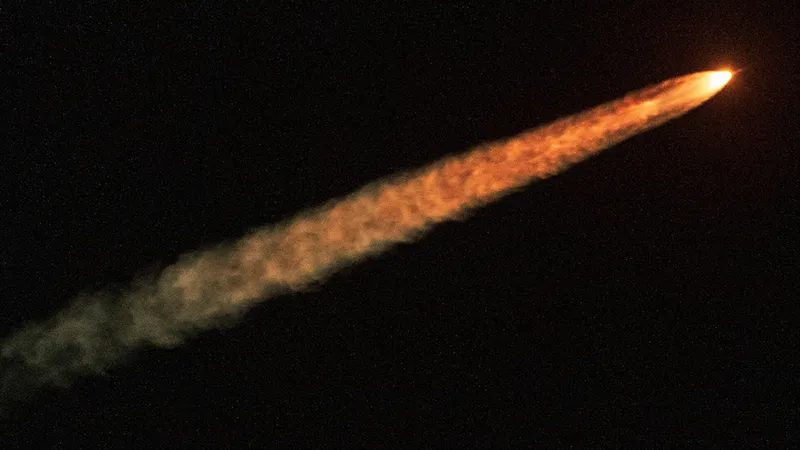video | Amazing moments of the launch of the new NASA rocket on its mission to the moon
Weather of Arabia - In a stunning scene with the roaring sound and light that illuminated the sky, and with a thrust of 8.8 million pounds (4 million kilograms), NASA's huge new rocket flew into space for the first time early on Wednesday morning (November 16), to launch its mission around The Moon, 50 years after the last lunar mission.
The rocket began its long-awaited voyage from the US state of Florida in the "Artemis" program, the successor to Apollo, which aims to return astronauts to the surface of the moon this decade and establish a sustainable base there as a starting point for human exploration of Mars in the future.
The 32-story space rocket (SLS) took off from NASA's Kennedy Space Center at 1:47 a.m. EST (0647 GMT), piercing the sky above Cape Canaveral with a fiery tail, as crowds of spectators cheered and screamed. About 90 minutes later, the rocket's upper stage propelled the Orion capsule out of Earth's orbit and on a trajectory to the moon, NASA said.

The launch of the missile on Wednesday follows the cancellation of two previous launch attempts in August and September during the countdown due to a technical defect, and the launch date was also postponed due to successive hurricanes ( Hurricane Ian and Hurricane Nicole ).
Wednesday's launch was also not without its challenges. About four hours before launch, the crews had to deal with a host of problems, including a leaking fuel valve, but technicians quickly resolved the issue.
Mission objectives "Artemis 1"
The Artemis I mission primarily aims to put the Orion spacecraft on a test flight around the Moon and back to Earth, to prove its safety and reliability to astronauts on the next mission, and to test the durability of Orion's heat shield during its rapid return to Earth's atmosphere. 24,500 miles (39,400 km) per hour, which would expose the shield to temperatures approaching 3,000 degrees Celsius.

Phases of the "Artemis 1" flight
The spacecraft is also slated to launch 10 miniature science satellites, including one designed to map ice deposits on the moon's south pole, where Artemis seeks the eventual landing of astronauts.
The Orion spacecraft is supposed to return to Earth on December 11, to fall into the sea, about three and a half weeks from now.

If the mission is successful, the manned "Artemis 2" flight around the moon will launch in early 2024, followed within a few years by the first moon landing of astronauts, including a woman, on the "Artemis 3" flight.
NASA plans to launch a series of more complex missions over the next ten years, which should lead to a more sustainable presence on the moon, with habitats and mobile spacecraft, as well as a small space station in orbit around the moon, to then enable it to explore Mars.
You may also be interested in: How did the Apollo 11 flag appear to be flying in space, even though there was no air on the moon?
Arabia Weather App
Download the app to receive weather notifications and more..



